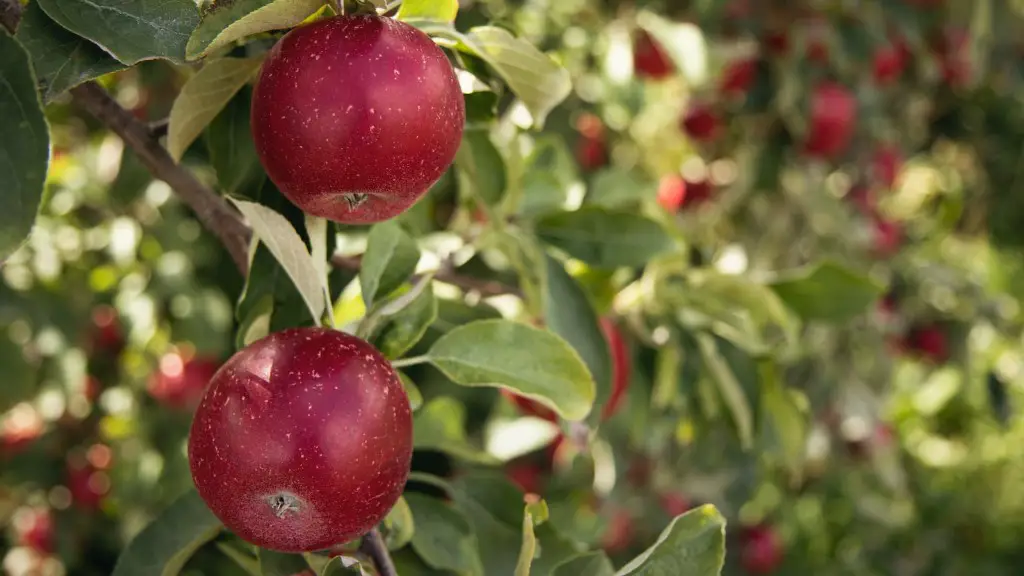Planting
Avocado trees require plenty of space to grow and thrive, as they can reach up to 20 feet in height. The tree can be grown in subtropical climates, but it is important to choose the right climate and soil type in order to get the best results. We recommend planting in a sunny spot that has partial shade, and well-draining soil that is slightly acidic with a pH of between 6 and 7. Fertilizing the soil can help keep your tree healthy, as can regular watering. Mulching with straw or wood chips also helps to retain moisture and keep the soil warm.
Pruning
Regular pruning is important for ensuring the health of your tree, as it prevents the branches from getting too durable and helps to maintain the shape and size of the tree. Start pruning when the tree is about three or four years old, as this is when it’s at the proper age for pruning. The goal of pruning is to create an open center, as this allows for better light and air circulation which will help keep the tree healthy. Prune the sides and top of the tree in a V or U shape, removing any overcrowded or crossed branches.
Harvesting
Avocado trees require patience, as it can take up to five years before they start producing fruit. Once they begin flowering and fruiting, the fruit is usually ready to harvest when it turns green and soft. The fruit should be picked as soon as it is ripe, as it will not continue to ripen once picked. Harvesting also helps to thin out the tree and encourages new fruit to grow.
Pest Management
Avocado trees can be prone to pest and disease issues, especially if the soil isn’t optimal or if the tree is stressed in some way. Common pests include aphids, scale insects, red spider mites, and citrus root weevils. The best way to protect your tree from pests is to practice preventative maintenance, such as keeping the tree watered and fertilized, and keeping the tree pruned and mulched regularly.
Drought Stress Management
Avocado trees require plenty of water in order to thrive, but can be susceptible to drought stress if the water supply is insufficient. Drought stress can be managed by regularly irrigating the tree, especially during the summer months when the trees are actively growing. Additionally, mulching the soil around the tree can help retain moisture.
Fertilizing
Fertilizing your tree once or twice a year can help to keep it healthy and lush. Apply slow-release fertilizer according to package directions, and make sure to water the tree generously after fertilizing. We also recommend using organic fertilizers when possible, as they are better for the environment and help to boost the soil’s fertility.
Providing Structural Support
Avocado trees can have large and heavy branches that make them susceptible to wind damage, so it’s important to provide some type of structural support for the branches. This can be done by utilizing wires or cables attached to a trellis or post, or by installing a staking system. Additionally, you may need to trim the branches if they are growing too heavy.
Irrigation System
Installing an irrigation system can help keep your tree healthy and productive by providing a consistent and regular supply of water. We recommend a drip irrigation system that is connected to a timer and can be adjusted as needed. This type of system will save both water and time, and it is ideal for keeping your tree in healthy shape.
Protecting From Frost
Avocado trees are susceptible to frost and freezing temperatures, and it’s important to protect them during cold weather. We recommend planting your tree in a sunny spot, and utilizing shade cloth and burlap to keep it protected from the wind and cold air. Additionally, installing an insulated frame around the trunk of the tree can help to keep it warm and protected.
Controlling Fungal Diseases
Fungal diseases can be a common issue for avocado trees, and they can cause the leaves to yellow and drop off, as well as affecting the fruit. We recommend regularly pruning and cleaning up the tree, and not over-fertilizing it. Additionally, treating the tree with a fungicide can help to control any existing fungal problems and prevent future outbreaks.
Monitoring Insect Pests
Insect pests can be a major problem for avocado trees and can cause serious damage if left untreated. The best way to monitor and control insects is to routinely inspect the tree for any signs of infestation. If you do find pests, a systemic insecticide can be used to treat and protect the tree.
Providing Nutrients and Minerals
Avocado trees require specific nutrients and minerals in order to remain healthy, productive, and lush. We recommend incorporating compost and leaf mulch into the soil to ensure that the tree is receiving ample nutrition. Additionally, applying a balanced fertilizer twice a year can help give the tree the nutrients it needs to thrive.

